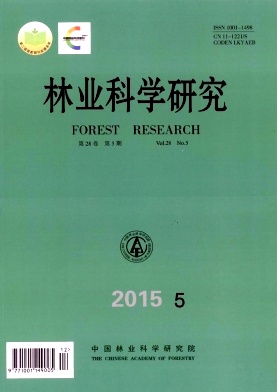|
[1]
|
Yao T, Yang X, Zhao F, et al. Measuring forest structure and biomass in New England forest stands using Echidna ground-based lidar[J]. Remote sensing of Environment, 2011, 115(11):2965-2974. |
|
[2]
|
Genet A, Wemsdorfer H, Jonard M, et al. Ontogeny partly explains the apparent heterogeneity of published biomass equations for Fagus sylvatica in central Europe[J]. Forest Ecology and Management, 2011, 261(7):1188-1202. |
|
[3]
|
Alves L F, Vieira S A, Scaranello M A, et al. Forest structure and live aboveground biomass variation along an elevational gradient of tropical Atlantic moist forest (Brazil)[J]. Forest Ecology and Management, 2010, 260(5):679-691. |
|
[4]
|
Namgail T, Rawat G S, Mishra C, et al. Biomass and diversity of dry alpine plant communities along altitudinal gradients in the Himalayas[J]. Journal of plant research, 2012, 125(1):93-101. |
|
[5]
|
Hui D F, Wang J, Le X, et al. Influences of biotic and abiotic factors on the relationship between tree productivity and biomass in China[J]. Forest Ecology and Management, 2012, 264:72-80. |
|
[6]
|
Nogueira E M, Fearnside P M, Nelson B W, et al. Estimates of forest biomass in the Brazilian Amazon:New allometric equations and adjustments to biomass from wood-volume inventories[J]. Forest Ecology and Management, 2008, 256(11):1853-1867. |
|
[7]
|
陈德祥,李意德,骆土寿,等.海南岛尖峰岭鸡毛松人工林乔木层生物量和生产力研究[J].林业科学研究,2004,17(5):598-604.
|
|
[8]
|
Kajisa T, Murakami T, Mizoue N, et al. Object-based forest biomass estimation using Landsat ETM+ in Kampong Thom Province, Cambodia[J]. Journal of Forest Research, 2009, 14:203-211. |
|
[9]
|
王晓莉,常 禹,陈宏伟,等.黑龙江省大兴安岭森林生物量空间格局及其影响因素[J]. 应用生态学报,2014,25(4):974-982.
|
|
[10]
|
Miehle P, Grote R, Battaglia M, et al. Evaluation of a process based ecosystem model for long term biomass and stand development of Eucalyptus globulus plantations[J]. European Journal of Forest Research, 2010, 129:377-391. |
|
[11]
|
侯兆疆,赵成章,董小刚,等.祁连山北坡天然草地不同尺度地上生物量空间格局对地形的响应[J].生态学杂志,2014,33(1):10-15.
|
|
[12]
|
王维芳,宋丽楠,隋摇欣.帽儿山林场生物量估测及时空动态格局分析[J].东北林业大学学报,2010,38(1):47-49.
|
|
[13]
|
刘双娜,周 涛,舒 阳,等.基于遥感降尺度估算中国森林生物量的空间分布[J].生态学报,2012, 32(8):2320-2330.
|
|
[14]
|
陶 冶,张元明.荒漠灌木生物量多尺度估测——以梭梭为例[J].草业学报,2013,22(6):1-10.
|
|
[15]
|
郑 路,蔡道雄,卢立华,等.南亚热带不同树种人工林生物量及其分配格局[J].林业科学研究,2014,27(4):454-458.
|
|
[16]
|
张国斌,李秀芹,佘新松,等.安徽岭南优势树种(组)生物量特征[J].林业科学,2012,48(5):136-140.
|
|
[17]
|
刘延惠,王彦辉,于澎涛,等.六盘山主要植被类型的生物量及其分配[J].林业科学研究,2011,24(4):443-452.
|
|
[18]
|
张田田,马履一,贾忠奎,等.华北落叶松幼中龄林的生物量与碳汇功能[J].东北林业大学,2012,40(12):32-35.
|
|
[19]
|
张春梅,焦 峰,温仲明,等.延河流域自然与人工植被地上生物量差异及其土壤水分效应的比较[J].西北农林科技大学学报(自然科学版),2011,39(4):132-138.
|
|
[20]
|
明安刚,贾宏炎,陶 怡,等.桂西南28年生米老排人工林生物量及其分配特征[J].生态学杂志.2012,31(5):1050-1056.
|
|
[21]
|
罗云建,张小全,王效科,等.华北落叶松人工林生物量及其分配模式[J].北京林业大学学报,2009,31(1):13-18.
|
|
[22]
|
Wen Y G, Chen F, Liu S R, et al. Relationship between species diversity and biomass of eucalyptus plantation in Guangxi, south China[J]. Frontiers of Forestry in China, 2009, 4(2):146-152. |
|
[23]
|
曹恭祥.六盘山香水河小流域植被结构水文影响及其坡面尺度效应.中国林业科学研究院博士学位论文,2014.
|
|
[24]
|
Qiu Y, Fu B J, Wang J, Chen L D. Spatial variability of soil moisture content and its relation to environmental indices in a semi-arid gully catchment of the Loess Plateau, China[J]. Journal of Arid Environments, 2001, 49:723-750. |
|
[25]
|
潘成忠,上官周平.黄土半干旱区坡地土壤水分、养分及生产力空间变异[J].应用生态学报,2004,15(11):2061-2066.
|
|
[26]
|
黄志霖,傅伯杰,陈利顶.黄土丘陵区不同坡度、土地利用类型与降水变化的水土流失分异[J].中国水土保持科学, 2005, 3(4):11-18.
|
|
[27]
|
Dufour A, Gadallah F, Wagner H H, et al. Plant species richness and environmental heterogeneity in a mountain landscape:effects of variability and spatial configuration[J]. Ecography, 2006, 29(4):573-584. |
|
[28]
|
Soethe N, Lehmann J, Engels C. Nutrient availability at different altitudes in a tropical montane forest in Ecuador[J]. Journal of Tropical Ecology, 2008, 24(4):397-406. |
|
[29]
|
Carolina V E, William E M, Nazare A R, et al. Variation in aboveground tree live in a central Amazonian forest:effects of soil and topography[J]. Forest Ecology and Management. 2006, 234:85-96. |
|
[30]
|
贾开心,郑 征,张一平.西双版纳橡胶林生物量随海拔梯度的变化[J].生态学杂志,2006,25(9):1028-1032.
|
|
[31]
|
时忠杰.六盘山香水河小流域森林植被的坡面生态水文影响.北京:中国林业科学研究院博士学位论文,2006.
|
|
[32]
|
Alves L F, Vieira S A, Scaranello M A, et al. Forest structure and live aboveground biomass variation along an elevational gradient of tropical Atlantic moist forest (Brazil). Forest Ecology and Management, 2010, 260(5):679-691. |





 DownLoad:
DownLoad: